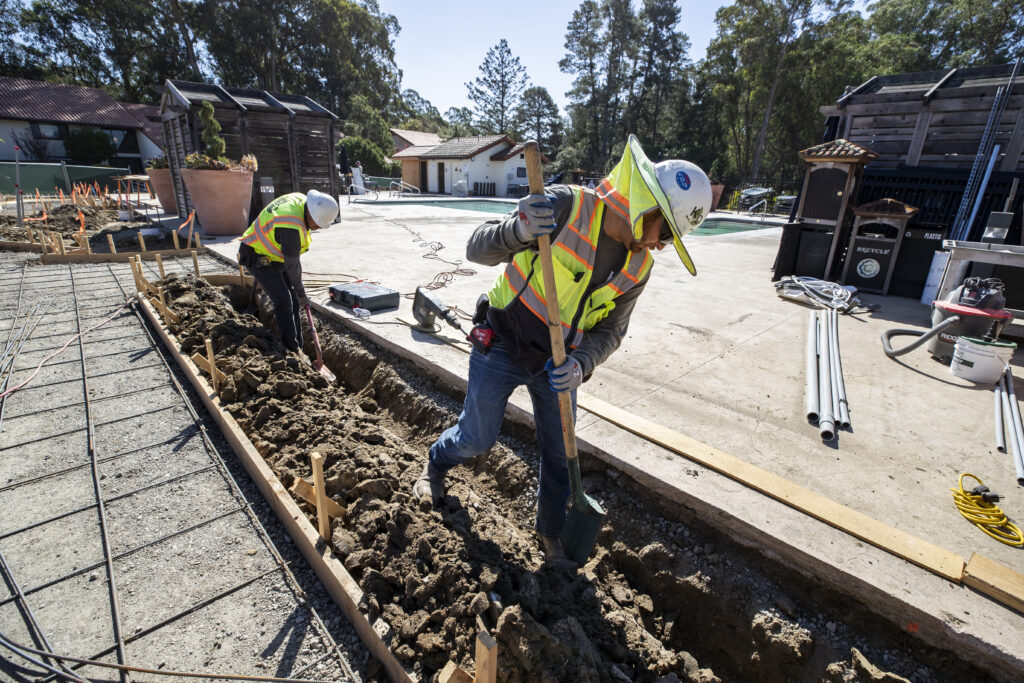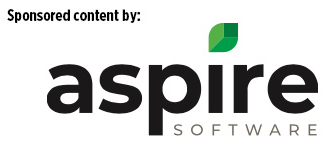
BUILDING A FOUNDATION FOR GROWTH
Contractors laud software that’s built with efficiency and scalability in mind for both landscape maintenance and construction businesses


The team members at Alpine Gardens in Ft. Collins, Colo., have been constructing a full-service landscape company from the ground up since the late 1970s. Today, second-generation owner Nate Fetig and his wife, Heidi, run a nearly $12 million operation with about 100 employees. The company does both landscape maintenance and design/build and installation, and has an approximately 50/50 residential-to-commercial mix. In Fetig’s experience, building a foundation for growth in the landscape industry starts with solid systems, good people and knowledge about benchmarks and key performance indicators (KPIs). Success would not be possible in any of these areas without powerful software to bring it all together, he says.
Alpine Gardens began using Aspire in 2016, when the company was about $7 million, after using spreadsheets and manual processes for decades. “Things were pretty chaotic without having some kind of centralized software to keep us organized and accountable,” says Fetig. “I hear from a lot of other contractors that software is expensive and that’s why they’re avoiding it. It is a pretty significant investment, but you’re going to hit a point where you can’t continue to grow without making that investment.”

Mark Stephens, managing partner for Stephens Landscaping in Moultonborough, N.H., has a similar perspective. His company has used software from the beginning in 2007, although he and his team used to operate with two separate software programs side by side. He says he discounted Aspire early on because it was significantly more expensive than what the company had been using. In 2017, he knew he had to make the move to a system like Aspire that was specifically designed to support companies as they grew. “As we wanted to continue to scale, we needed to be on a software that was scalable as well,” he says. Before joining Aspire, Stephens Landscaping did approximately $7 million to $8 million in annual revenue.
“This year, we’ll do $20 million, and I attribute a lot of that to Aspire,” Stephens says. “Everyone is on the same page, we’ve added three to five points to the bottom line, and it’s not stressful to bring on a new sales person or account manager.” Both Alpine Gardens and Stephens Landscaping do a mix of maintenance and design/build and construction. Aspire has long focused on commercial maintenance, but this year began rolling out construction enhancements that both Fetig and Stephens are excited about.
A Blueprint for Construction Enhancements

Since it was founded in 2013, Aspire has always been capable of supporting landscape contractors’ design/build and construction businesses, although traditionally it has been best suited for managing maintenance operations. As part of the company’s evolution, bolstered by a bump in landscape construction work during the COVID-19 pandemic, Aspire committed to improving its construction feature set.
“The pandemic was hard; it was scary for a while, but it blew the doors wide open for landscape construction,” says Whitney Griffin, senior product owner at Aspire. “Now that the economy has shifted and everyone is building again, our customers, even ones that have historically not stepped foot in the construction space, are starting to offer bid/build and/or design/build services. We want to be the only solution they need.” With that mindset, Aspire set out to remove “friction points” for its construction users, Griffin says.

Aspire CEO Mark Tipton explains further. “We’ve always had some construction capability, and the need for it has been growing,” he says. “As we looked at the market, we could make our customers a lot happier and we could grow more by moving in this direction, so those conversations started about three years ago.
The Aspire team began outlining an approach and collecting feedback. A major part of the effort was creating client advisory groups for different focus areas, such as design/build and bid/build, which helped the team prioritize the software’s enhancements and shape their functionality. “Those client advisors are invaluable,” Tipton says. “It gets us back to our roots. That’s how we started Aspire — sitting down with a group of contractors and asking, ‘What do we need to make Aspire do? How should it work?’ It gave me great confidence that what we were doing was going to be on target.”
Aspire Construction Enhancements — Explained
Most of the items on the construction roadmap are improvements to existing functionality, Griffin says. Several are new features. Here are just a few of the enhancements she says landscape contractors are looking forward to the most.

- Open billing: Aspire has always allowed open billing, but now users can bill by a percentage, dollar amount or with increased granularity, if desired.
- Invoicing flexibility: Soon, users will have the ability to complete invoice revisions in closed months that still follow accounting best practices.
- Equipment scheduling: Aspire now allows scheduling of shared equipment assets, such as skid-steer loaders and other construction tools.
- Project management: Another key improvement for landscape construction divisions is expanded, interactive Gantt chart functionality, including the ability to add milestones and tasks.
- Work-in-Progress (WIP) reporting: New WIP reporting capabilities include filtering and comparing current and prior billing periods.
- Dynamic forecasting: Aspire’s new dynamic forecasting tool auto-populates sold construction revenue, so users can assess their future workloads and labor needs.
- Estimate revisions: Early next year, Aspire users will be able to create multiple estimates for a single opportunity.
- Submittals management: Coming soon, the software will log every action Aspire users and customers take, creating a dual-sided digital “paper” trail.
Contractors’ Take

Fetig is most excited about the equipment scheduling function. It will be a huge improvement over the magnetic board his team currently uses, he says. “It will really help us get a handle on how we’re allocating our resources and become more efficient in moving equipment around from site to site,” he says. “It’s going to increase visibility and allow us to share equipment across different divisions. (Currently) we probably end up renting more equipment than we need to.”
Fetig also appreciates Aspire’s new vendor management tools. “Now, you can assign a vendor to a material in the estimating process, so by the time it gets to the purchasing person, they know where it’s supposed to be coming from,” he says. “You still have the opportunity to shop around and get the best deal, but it’s a really big time-saver (for the purchasing department) and eliminates possible miscommunication or ordering from the wrong place. It’s a pretty simple change, but it’s made a pretty big impact right off the bat.”
Stephens is also excited about the ability to assign vendors at the estimate level, in addition to item catalog price overrides, which he says allow for quick changes for custom products or items not in your catalog. Scheduling-wise, he calls the upgraded Gantt charts “super helpful to give us a quick overview of where we are headed and where we should be headed.”
Stephens is also looking forward to the new WIP reporting capabilities. “You’re not waiting until the end of the job to realize ‘We’re way behind on profitability,’” he says. “That way you can adjust.”
What’s Next?
Going forward, the industry can expect more investment from Aspire around helping contractors be more efficient and grow, according to Tipton. “Efficiency has always been the foundational thing Aspire was built on,” he says. “Now, as part of the influence of ServiceTitan (which acquired Aspire in 2021), we rolled out a product called Marketing Pro, an automation tool that lets you reach out to prospects and exiting customers, whether you’re focused on upsells or winning new business.”
ServiceTitan also recently acquired a business called Convex, which helps commercial contractors find and engage with prospective clients, he adds. Early adopters leveraging Convex with Aspire and PropertyIntel are already seeing drastic improvements in close rate.
Join Aspire CEO Mark Tipton and Senior Product Owner Whitney Griffin as they detail the company’s expanded construction toolset in an on-demand webinar, “Building Better with Aspire: Streamline Construction Operations for Higher Profits.”